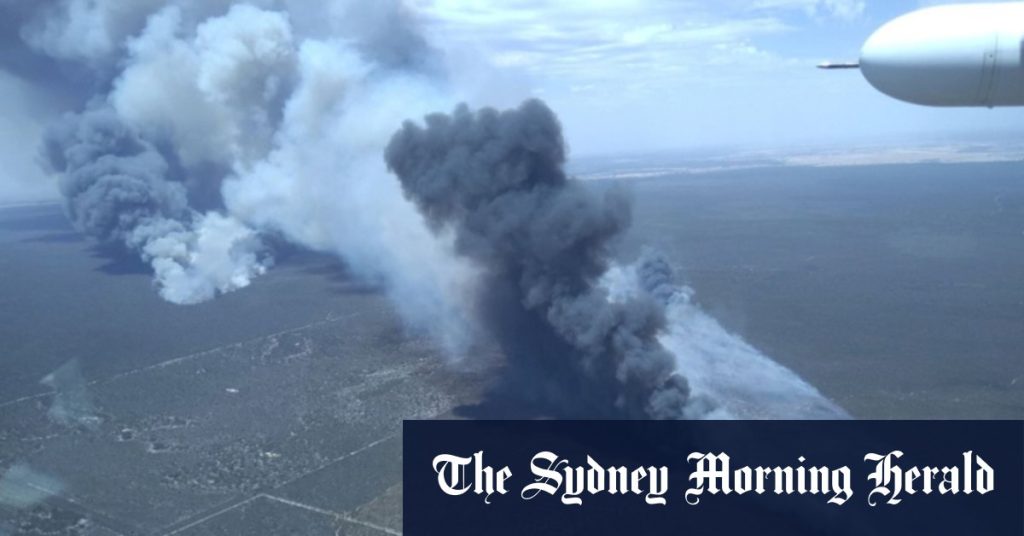Melbourne sweltered under a scorching heatwave on Monday, with temperatures soaring beyond 40 degrees Celsius, fueled by strong northerly winds exceeding 45 km/h. Point Cook bore the brunt of the heat, reaching a peak of 42 degrees in the mid-afternoon, a temperature that stubbornly persisted for several hours before a dramatic plunge to 27 degrees within a mere half-hour as a cool change swept through the city. The extreme heat prompted a total fire ban across several regions, including the Mallee, Wimmera, South-West, North-Central, and Central areas encompassing Melbourne, with an extreme fire danger rating issued for these zones. The rapid temperature drop at Melbourne’s Olympic Park weather station, a 10-degree plummet in just 15 minutes, underscored the sudden shift brought by the cool change.
The extreme heat and dry conditions fueled several bushfires across the state, posing significant challenges for firefighters. A major blaze in the Little Desert National Park prompted urgent evacuations for nearby communities, including Kinimakatka, Winiam West, Duchembegarra, Cooack, and Nurcoung, with authorities issuing “leave now” alerts. The fire, driven by strong winds and tinder-dry vegetation, grew rapidly, raising concerns that it could spread to private land. Additional fire incidents included a grass fire at Rokewood, initially prompting a “watch and act” alert before being downgraded to an advice level. Authorities stressed the importance of heeding evacuation warnings, emphasizing the rapidly changing nature of the fire conditions.
State Control Centre spokesman Luke Heagerty underscored the widespread nature of the hazardous conditions, with hot, dry, and windy weather impacting much of Victoria, compounded by the presence of dry lightning in some areas, including the Little Desert National Park. He urged tourists and campers in the affected areas to evacuate immediately, highlighting the rapid growth and intensity of the fire. While the cool change brought some respite, Heagerty noted the challenges remaining for fire crews in containing the blazes that had ignited earlier in the day. The prospect of severe thunderstorms with damaging winds added further complexity to the situation, requiring continued vigilance.
Beyond the fire threat, the extreme weather also disrupted power supplies, with AusNet reporting over 5,000 customers without power in the late afternoon. The intense heat also coincided with an unusual incident on Elwood beach, where a four-wheel drive became bogged down on the shoreline in the early morning, highlighting the unexpected consequences of extreme weather events. The driver, expressing confidence in his ability to retrieve the vehicle, eventually required the assistance of a bulldozer.
In the early hours of Monday morning, a devastating house fire in Taylors Lakes further stretched emergency services. The blaze, which resulted in a significant structural collapse, prevented firefighters from initially entering the two-story home. While the fire was eventually brought under control, the extent of the damage and the possibility of anyone being inside remained uncertain, with initial indications suggesting the house may have been abandoned.
This combination of extreme heat, strong winds, dry conditions, and fire outbreaks created a challenging and dynamic situation across Victoria on Monday. The rapid temperature fluctuations, from scorching heat to a sudden cool change, underscored the volatile nature of the weather. The multiple fire incidents highlighted the heightened risk of bushfires under such conditions, while the power outages and beach incident demonstrated the broader impact of extreme weather on daily life. The house fire in Taylors Lakes added a further layer of complexity to an already demanding day for emergency services. The events of Monday served as a stark reminder of the challenges posed by extreme weather and the importance of preparedness and vigilance.

